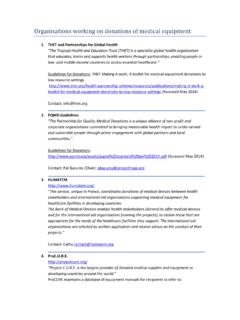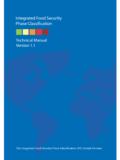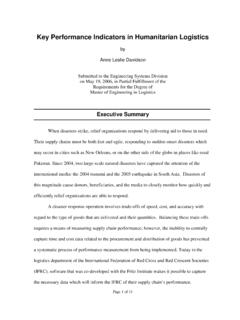Transcription of LIVE CASE STUDIES IN ORGANIZATIONAL CHANGE
1 international Journal of case Method Research & Application (2006) XVIII, 2 2006 WACRA . All rights reserved ISSN 1554-7752 live case STUDIES IN ORGANIZATIONAL CHANGE : LEARNING ABOUT CHANGE THROUGH STUDENT PHILANTHROPY AND SERVICE-LEARNING Tracey Honeycutt Sigler Northern Kentucky University HIGHLAND HEIGHTS, KENTUCKY, Abstract Students in an undergraduate course on Managing CHANGE participated in a philanthropy service-learning project with local non-profit organizations to: (1) learn about the organizations, (2) help the organizations create grant proposals, (3) create plans for desired changes in the organizations, and (4) award grants to the organizations. To create recommendations for CHANGE , students had to gather information about the organizations that would be provided by the author in a traditional case .
2 These live case STUDIES helped the students to see that real ORGANIZATIONAL CHANGE is ambiguous, complicated, and challenging. KEY WORDS: Service-learning, management, philanthropy, ORGANIZATIONAL CHANGE , undergraduate education INTRODUCTION The Managing CHANGE course at Northern Kentucky University (NKU) included a philanthropy component and a CHANGE analysis component. The Mayerson Foundation supported the philanthropy component with a $4,000 grant. The grant was to provide support for projects by local non-profit organizations. The class of thirty students was divided equally into six groups. Each group identified a community issue that it wanted to address with the grant funding, and completed research to compile a list of local organizations that had a focus on that issue.
3 Each group selected one community organization to partner with based on the fit between the group s target issue, the mission of the organization , and an initial conversation with the organization . The students visited their community partner organization to learn more about it and to identify a project that might be funded by the grant. They also helped the organization prepare a grant proposal and a presentation to describe the proposal. At the end of the semester, students evaluated the grant proposals and decided as a total class which projects to fund. In the CHANGE analysis component, the student groups made recommendations for CHANGE in the organizations they had chosen. This course component was a live case study.
4 Students had to identify specific ORGANIZATIONAL issues, complete the research necessary to address the ORGANIZATIONAL issues, evaluate the quality of the data they collected, and then make recommendations about how to address the issues. Students interacted directly with the organizations and made recommendations that had potential for positive impact. Feedback from the students indicated that these live case STUDIES helped them understand the complexity of ORGANIZATIONAL CHANGE . In their reflections on the class, students indicated that the CHANGE analysis project was much more difficult than the written case STUDIES they completed in class. 194 international Journal of case Method Research & Application (2006) XVIII, 2 This paper describes the Mayerson Student Philanthropy Project, the implementation of the project within the CHANGE Management course, the CHANGE analysis project, the course feedback from the students, and the author s conclusions.
5 THE MAYERSON STUDENT PHILANTHROPY PROJECT The Mayerson Student Philanthropy project was created as a partnership between the Manuel D. and Rhoda Mayerson Foundation in Cincinnati, Ohio, and Northern Kentucky University. NKU is located in Highland Heights, Kentucky and is part of the greater Cincinnati, Ohio metropolitan region. NKU is a metropolitan university with approximately 14,000 students. The Mayersons have been very active philanthropists both locally and nationally. The Mayerson Foundation website makes the following statement regarding the organization s mission: The mission of the Manuel D. and Rhoda Mayerson Foundation is to invest, not only its financial resources, but its human resources as well, in efforts that are effective, broad reaching, and that are driven by people with a passion for making a significant difference in the areas of interest to the Trustees.
6 The Trustees seek to play a strategic and catalytic role: a) in the development of new programs, b) in the expansion of existing programs with demonstrated effectiveness, and c) in building the capacity of organizations that implement those programs [Mayerson Foundation website]. Foundation President Neal Mayerson and NKU President James C. Votruba created an educational experience where NKU students learn about their community and achieve their course learning objectives while acting as philanthropists. The Mayerson Foundation provided financial assistance in the form of $4,000 for each class participating in the student philanthropy project. The partnership between the Mayerson Foundation and NKU is described as follows: Dr.
7 Mayerson agreed to fund a program integrating philanthropy into the college curriculum with the hope of advancing the development of competent student-citizens who seek to play vital roles in their community and who are committed to the pursuit of the common good [NKU Scripps Howard Center for Civic Engagement website, Mayerson Student Philanthropy Project Overview]. One major premise of the program was that the money would be used twice, once to teach students about the community, its needs, and the course learning objectives and once to help local non-profit organizations meet community needs. The Mayerson Student Philanthropy Project was initiated in the Fall semester of 2000. The NKU Center for Civic Engagement reported that, as of December 2005.
8 $287, has been invested in 199 projects involving 199 agencies. An estimated 51,670 individuals have been impacted by the Mayerson Student Philanthropy Project [Center for Civic Engagement website, Mayerson Student Philanthropy Project Overview]. The Mayerson Student Philanthropy Project has been integrated into a variety of classes at NKU. For example, in an Art class, the students had to choose how to allocate funds among local arts-related non-profit organizations. In a course on Influence, students wrote letters to the business community, family, and friends soliciting donations to provide funds for the class to make grants. In a course on Sales Management, students were organized into sales teams responsible for raising additional funds for non-profit organizations.
9 In the Managing CHANGE course, the Mayerson Student Philanthropy Project became a service-learning project. USING MAYERSON IN A MANAGEMENT COURSE The Mayerson Student Philanthropy Project was incorporated into a course offered by the NKU management department in the Spring semester of 2003. The course, Managing CHANGE , was required for all management majors and was usually taken by students in their senior year. The class was relatively small (approximately 30 students). Students worked in groups throughout the semester to learn about managing CHANGE in organizations and in society. The objectives of the course were to: Identify and understand theories of ORGANIZATIONAL CHANGE . Analyze the process of ORGANIZATIONAL CHANGE in real organizations.
10 Practice critical analysis skills. Become more skillful in working in and managing groups. Develop written, oral, and interpersonal communication skills. international Journal of case Method Research & Application (2006) XVIII, 2 195 Understand how non-profit organizations create social CHANGE and assist the organizations in creating social CHANGE . organization OF THE PROJECT Students were provided with background information on the Mayerson Student Philanthropy project as part of the syllabus. The stated objectives for the Mayerson Project in this course were to: 1) create a positive social CHANGE in the greater metropolitan area, 2) explore ways for non-profit organizations to respond to changes in their environments, and 3) apply CHANGE concepts learned in the course to create a plan for a local non-profit organization to deal with CHANGE .


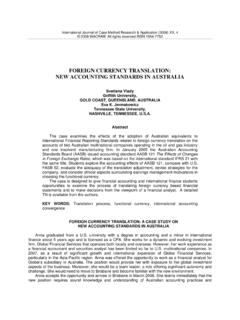


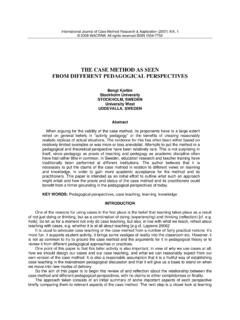

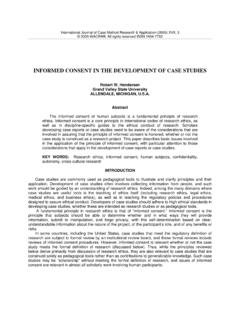


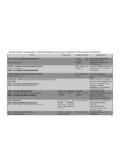
![The Non-Governmental Organisations Act [Chapter…]](/cache/preview/0/c/1/f/8/3/5/e/thumb-0c1f835e29b6c7beeaf77237168102b9.jpg)
